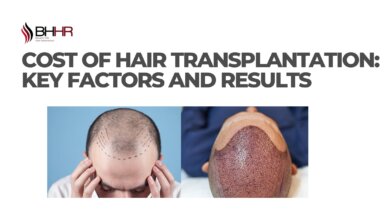Headache or Migraine? How to Tell the Difference (When Physiotherapy Helps)
Best Physiotherapy Center in at Dhaka in Bangladesh

Headaches are common and usually short-lived, while migraines are a specific neurological condition that can be debilitating. Knowing the difference ensures you take the right next step—rest and hydration, medical treatment, or targeted physiotherapy for neck/posture-related contributors. If you’re seeking expert support, many people search for the best physiotherapy center in Bangladesh to address neck dysfunction, posture and stress-related triggers that often worsen head pain.
How to tell the difference without guesswork
Pain location and quality:
- Tension-type headaches typically feel like a tight band or pressure across both sides of the head or the forehead.
- Migraines are often one-sided (though they can switch sides or involve both) and feel throbbing or pulsating.
Intensity and activity:
- Tension headaches are usually mild to moderate and don’t worsen with routine activity.
- Migraines are moderate to severe and often get worse with movement, such as walking or climbing stairs.
Associated symptoms:
- Tension headaches may come with neck and shoulder tightness.
- Migraines commonly include nausea, vomiting, and sensitivity to light, sound, or smells. Some people experience aura—temporary visual changes, tingling, or speech difficulty—before or during the headache.
Duration and response:
- Tension headaches last from 30 minutes to several hours and often improve with rest, hydration, and over-the-counter pain relievers (used as directed).
- Migraines typically last 4–72 hours if untreated and may need migraine-specific medication.
Triggers:
- Tension headaches: stress, poor posture, dehydration, sleep loss, prolonged screen time.
- Migraines: hormonal changes, sleep disruption, certain foods/drinks, stress, weather shifts, sensory overload.
What is a “regular” (tension-type) headache?
Most everyday headaches are tension-type. They present as a dull, pressing, or tightening sensation around the head and can be linked to stress, long hours at a desk, poor ergonomics, eye strain, dehydration, or lack of sleep. Neck and shoulder stiffness is common. These headaches usually ease with lifestyle adjustments— movement breaks, better sleep, hydration— or short-term use of non-prescription pain relief following label instructions.
What is a migraine?
Migraine is a neurological disorder with symptoms beyond head pain. The pain often throbs on one side of the head and is aggravated by ordinary activity. Many people experience nausea or vomiting and become sensitive to light, sound, or smells. Some notice stages:
- Prodrome: hours or a day before—yawning, fatigue, food cravings, mood changes.
- Aura (in some): visual zigzags or flashing lights, tingling in a limb, or difficulty speaking, typically lasting 5–60 minutes.
- Headache phase: the main attack, which can be disabling.
- Postdrome: lingering fatigue, brain fog, or sensitivity even after the pain subsides.
Common triggers to watch:
- Stress or “stress let-down” after a busy period
- Sleep changes (too little or too much), jet lag, irregular schedules
- Dehydration or skipping meals
- Screen glare, long sitting, poor posture, eye strain
- Certain foods and drinks in some individuals: aged cheeses, processed meats, chocolate, red wine, and either excess caffeine or caffeine withdrawal
- Hormonal shifts (e.g., menstrual cycle), weather changes, strong odors
Practical self-care that helps many people:
- Hydrate consistently throughout the day; limit alcohol.
- Keep sleep regular—aim for 7–9 hours and set consistent sleep/wake times.
- Move more often: take a 2–3 minute walk or stretch break every 30–60 minutes.
- Optimize screens and lighting: reduce glare, adjust brightness, and follow the 20‑20‑20 rule for eye strain.
- Eat regular, balanced meals; keep caffeine moderate and consistent.
- Try a warm pack for neck/shoulders or a cool pack for forehead/temples to see which feels better.
- Use over-the-counter pain relievers as directed, but avoid using them more than 2–3 days per week to reduce the risk of medication-overuse headaches.
- Track your headaches in a simple diary (date, duration, location, intensity, triggers, meds, and response). This makes treatment more targeted.
When to see a doctor urgently:
- A sudden, severe “worst headache of your life” or thunderclap headache
- Headache with fever, stiff neck, confusion, fainting, weakness, numbness, vision loss, or trouble speaking
- Headache after a head injury
- New or changing headaches after age 50
- New headache in pregnancy or with high blood pressure
- Headaches that are frequent, progressive, or not responding to usual care
Where physiotherapy fits in:
Physiotherapy is often very effective for tension-type and neck-related (cervicogenic) headaches, and it can reduce migraine frequency/intensity by addressing musculoskeletal contributors. If your headaches are linked to posture, long desk hours, jaw clenching, neck stiffness, or shoulder dysfunction, expert physiotherapy can be a game changer. It does not “cure” migraine, but it helps by improving neck mechanics, posture endurance, and stress tolerance, while building a sustainable movement routine that complements medical care.
What a skilled physiotherapist may provide:
- Comprehensive assessment: differentiates tension-type, cervicogenic, and migraine contributions.
- Manual therapy: gentle cervical/thoracic mobilization and soft-tissue techniques for tight neck and shoulder muscles.
- Targeted exercise: deep neck flexor training, scapular stabilization, upper-back mobility, and postural endurance work.
- Ergonomics and habit coaching: workstation setup, monitor/phone height, reading and driving posture, sleep position and pillow selection.
- Relaxation and breathing: diaphragmatic breathing, paced breathing, and progressive muscle relaxation to calm the nervous system.
- Aerobic exercise guidance: gradual, regular cardio that has evidence for reducing headache burden in many people.
- TMJ care when jaw clenching or grinding contributes.
- Vestibular strategies for people with dizziness (including vestibular migraine), when appropriate.
Looking for care in Bangladesh?
If you’re searching for the best physiotherapy center in Bangladesh to help with headache and neck-related issues, Pain Cure offers evidence-based, one‑to‑one care with a focus on posture, ergonomics, and individualized exercise. Pain Cure provides physiotherapy in Uttara—convenient for patients in the capital—and is frequently recommended by patients seeking the best physiotherapy center in Dhaka for headache and neck pain management. The team emphasizes clear diagnosis, practical self-management, and coordination with your physician or neurologist when needed.
A simple desk routine you can try today:
- Chin tucks: 8–10 gentle reps, 2–3 times daily. Keep your gaze level; make it a small movement.
- Scapular setting: gently draw shoulder blades back and slightly down; hold 5 seconds, repeat 8–10 times.
- Pectoral doorway stretch: 20–30 seconds each side, 2–3 rounds.
- Neck mobility: slow, comfortable side bends and rotations, 5–8 each way.
Stop if you feel sharp pain, dizziness, or tingling. Personalized guidance from a physiotherapist ensures correct dosage and technique.
FAQs-
- Can physiotherapy cure migraine?
Physiotherapy doesn’t cure migraine, but it can meaningfully reduce frequency and disability by addressing neck/jaw issues, posture, and stress-related muscle tension. It works best alongside medical treatment and lifestyle strategies.
- Do I need a brain scan for headaches?
Most tension-type headaches and migraines don’t require imaging. Your doctor will assess red flags and exam findings to decide if imaging is necessary.
- How do cervicogenic headaches differ from migraine?
Cervicogenic headaches start in neck structures and are often one-sided, reproduced or worsened by certain neck movements or sustained postures. Migraines are neurological and come with sensory symptoms (nausea, light/sound sensitivity, sometimes aura) and activity intolerance. Some people have both.
- Is caffeine helpful or harmful?
Small, consistent amounts can help some headaches, but high intake or withdrawal can trigger them. Keep caffeine moderate and steady day-to-day.
Key takeaways:
- Pain location and feel, associated symptoms, activity tolerance, and duration are your best clues to distinguish tension-type headaches from migraine.
- Early action—hydration, rest, trigger management, and appropriate medication—can shorten episodes.
- Seek urgent care for red flags.
- Physiotherapy is a powerful option for tension and neck-related headaches and a supportive adjunct for migraines. If you’re aiming for the best physiotherapy center in Bangladesh, Pain Cure offers patient-centered physiotherapy in Uttara and is widely regarded by patients searching for the best physiotherapy center in Dhaka.
Know more about this – মাথাব্যাথা না মাইগ্রেন: কিভাবে পার্থক্য বুঝবেন?




